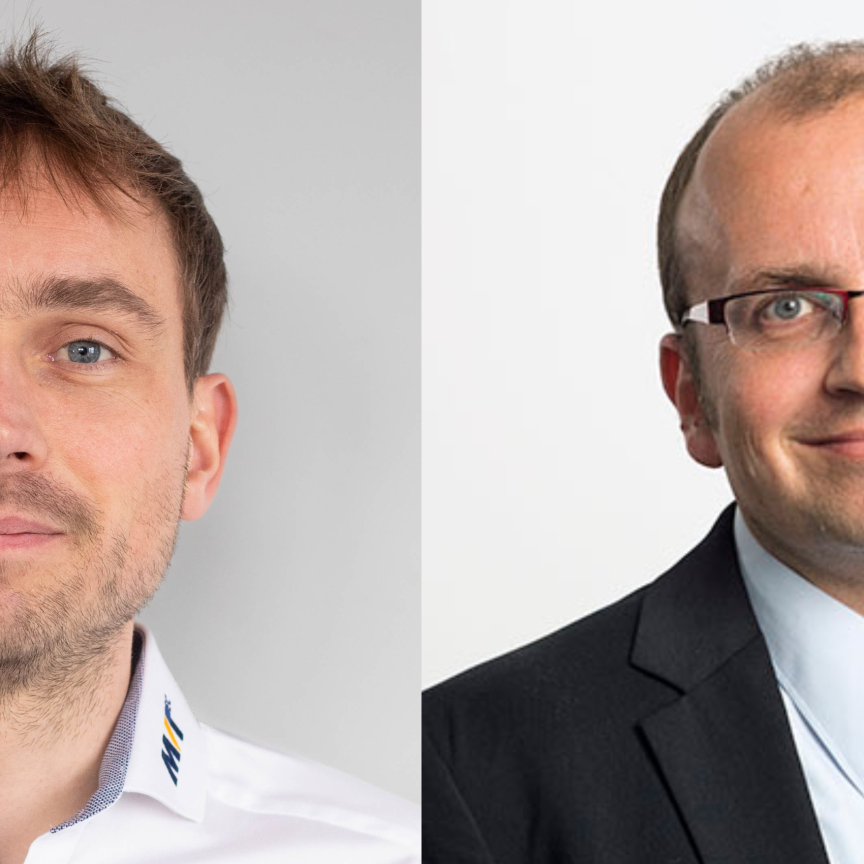In his opening address for this year’s Vision show in Stuttgart at the beginning of October, Roland Bleinroth, President of Messe Stuttgart, praised the vision sector, saying the two show halls “are packed with innovation”.
This was undoubtedly the case, with AI, 3D vision, hyperspectral imaging and a host of other technology on display. Making use of CAD software was also highlighted, with Kitov.ai winning the Vision Award for its software that takes information from a CAD model and uses it to plan a robot inspection task, and Visometry, which won the best start-up for its augmented reality software that tracks manufactured items via CAD models.
In his address to trade fair attendees at the start of the show, Mark Williamson, Chairman of the Board of VDMA Machine Vision, pointed to other growth trends taking place in the industry, including: extended wavelength imaging, into the shortwave infrared and the ultraviolet, thanks to sensors from Sony and new quantum dot sensors; embedded vision; and event-based imaging from the likes of Prophesee, winner of last year’s Vision Award. Williamson said event-based vision was still very small in terms of market share but had good growth potential.
Giving data from VDMA Machine Vision’s market survey, Williamson said the vision industry had grown by an impressive 16% in Germany in 2021, reaching a turnover of €3.1 billion.
He said that this level of growth was unexpected – VDMA Machine Vision was predicting only 7% growth in 2021 this time last year – and was, to some extent, an indication of unpredictability in the market. One potential reason Williamson gave was that companies were stockpiling components in light of uncertainty in the market, around shortages in semiconductor components and supply chain issues.
VDMA Machine Vision is remaining cautious for its estimate for this year, forecasting 8% growth to a turnover of €3.3 billion.
Williamson warned that the challenge for machine vision businesses will be next year’s market conditions, as it’s still unclear what the effects of stockpiling will be and there is still a lot of uncertainty in terms of the global economy.
In a comment for Messe Stuttgart, Dr Dietmar Ley, CEO of Basler, said: “Currently the sector is subjected to powerful market dynamics. Past experience shows that decreased demand usually did not exceed 18 months. We are expecting the market to recover in 2024 and the situation of the material markets of electronic components to improve within the course of 2023.”
While sales into manufacturing is the largest customer sector for machine vision from Germany, with a market share of around 60%, manufacturing didn’t grow much in 2021. The growth came from non-manufacturing markets, such as agriculture, medical and ITS, Williamson said.
Having said that, Williamson noted there is demand for machine vision in automotive and electronics, and that factories are being built for electric vehicle battery production.
Machine vision component suppliers generated 66% of their turnover abroad; system providers achieved 74% of their turnover on foreign markets. Exports of vision components to China increased by 20% in 2021, while exports of systems to China increased 16%. The largest growth market in the Asia region for vision components was India with a plus of 89%.
GigE gathers pace
A number of camera makers were promoting faster gigabit ethernet models, with 5GigE, 10GigE and even, in the case of Emergent Vision Technologies, 100GigE cameras on display.
As higher resolution sensors become available, interfaces have to get faster to transfer all that data, and GigE is no exception. Basler and Teledyne were both showing 5GigE cameras, while Matrix Vision had a 10GigE camera on its stand. Lucid Vision Labs showed new models of its Atlas family, including a 10GigE version with Gpixel’s 65MP sensor, and a 25GigE version with an SFP28 interface to run the Pregius-S sensor at higher bit depths.
Marc Damhaut, CEO of Euresys, told Imaging and Machine Vision Europe at the show that Euresys is working with the GigE Vision committee to advance the standard to reach 25Gb/s. (Cameras from Lucid and Emergent reach 25GigE speeds, but this is proprietary technology.) Euresys’ sister company, Sensor to Image, was showing an IP core with support for 25GigE Vision.
Damhaut said demand for higher GigE Vision speeds is needed in flat panel display inspection, for inspecting OLED displays, for instance. Euresys was also demonstrating advances in Coaxpress frame grabbers, as they move to higher speed, also driven by demand in electronics and semiconductor inspection. Damhaut said that the next step in Coaxpress is Coaxpress-over-fibre to transfer data over a possible four lanes at 25Gb/s each.
Damhaut said Euresys was receiving requests for high-resolution imaging outside of electronics production – in one case for installing a system in sports stadiums to acquire video at high resolution and fast frame rates. This echoes Williamson’s statement that interest in industrial vision technology is growing in non-industrial sectors.
Visitor numbers up
The trade fair recorded a total of 6,505 visitors over its three days, up from the 5,400 people who attended last year’s show when some travel restrictions were still in place, but down on the 2018 show that had 11,106 visitors.
There were 378 exhibiting companies, 60 per cent of which came from abroad.
Overall, visitors from 60 countries were registered. The strongest presence was from Italy, Switzerland, the Netherlands, France, Austria, Belgium, Poland, Spain and the UK; there was also audience from South Korea, Japan and the USA.
Messe Stuttgart said that, in addition to the classical client industries such as electrical engineering/electronics, mechanical engineering and plant construction as well as the automotive and automotive component supply industry, there was a significant share of visitors from non-industrial sectors present, including medical technology and pharmacology, agricultural industry, aerospace engineering as well as transport and logistics.
The organisers said that the interest in offers of non-industrial applications increased compared to the previous year. Turnkey machine vision systems also recorded increased visitor attention.
The next Vision trade fair will take place from 8 to 10 October 2024.


